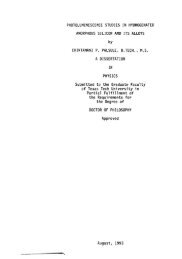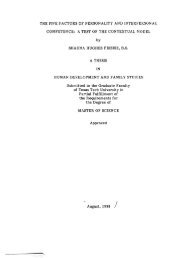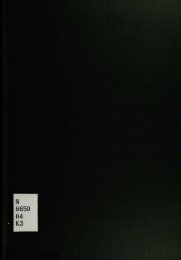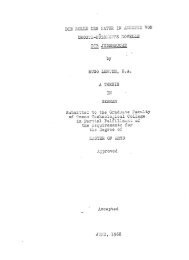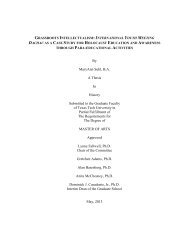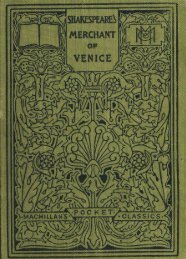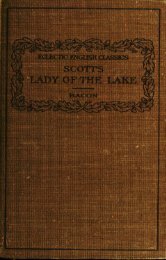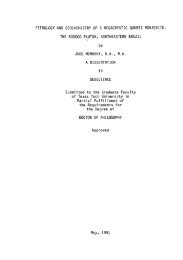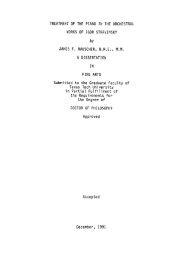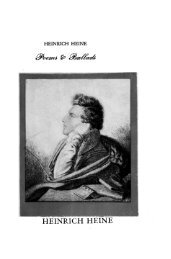THE SOUNDSCORE TO heartBEAT: A NARRATIVE-FORM MUSIC ...
THE SOUNDSCORE TO heartBEAT: A NARRATIVE-FORM MUSIC ...
THE SOUNDSCORE TO heartBEAT: A NARRATIVE-FORM MUSIC ...
You also want an ePaper? Increase the reach of your titles
YUMPU automatically turns print PDFs into web optimized ePapers that Google loves.
Clavicin Oculaire<br />
The first known color music system was put forth in 1734 by a Jesuit priest and<br />
scholar, Louis Bertrand Castel.^ He constructed the clavicin oculaire. or "harpsichord<br />
for the eyes," an instrument which featured an arrangement of colored tapes, attached to a<br />
keyboard, through which light was passed. These tapes were arranged according to the<br />
color spectrum, though Castel did not adopt Newton's details of pitch and color<br />
equivalences. Rhythmic alternations of keys resulted in corresponding changes in the<br />
colored tapes. Historical accounts of the clavicin oculaire suggest that its practical success<br />
was limited, due largely to technological shortcomings of the period.<br />
The Symbolists<br />
The most intense period of artistic interest in synaesthesia occurred from 1880 to<br />
1930, beginning with the Symbolist movement in 1880. The Symbolists, led by<br />
Baudelaire, Rimbaud and others, held the notion that the primary differences among the<br />
related arts were differences only in their physical nature. Art, literature, music and<br />
drama were seen as signifiers of a single type of aesthetic experience. Charles Henry, a<br />
Symbolist artist and philosopher, predicted that man ultimately would develop "one totally<br />
dynamogeneous art."^ This was to be an integrated, synaesthetic experience designed to<br />
affect the viewer not just aesthetically, but in a holistic, restorative sense. Henry<br />
speculated that this experience would probably not even be regarded as aesthetic, but as<br />
some super-mental environment<br />
New synaesthetic combinations were actively explored during this period.<br />
Literature, long an integral element in drama, was combined synaesthetically with color in<br />
Rimbaud's sonnet Les vovelles. in which each vowel was typeset in the color in which it<br />
appeared to him (A black, E white, I red, Q blue, Ii green).^ The Song of Solomon (text<br />
by Paul Roinard, music by Flamen de Labrely), premiered in Paris in 1891, was designed<br />
to engage the senses of sight, sound and smell.^ Described as "a symphony of spiritual<br />
love in eight mystical devices and three paraphrases," the first section featured vocal<br />
recitations of the vowels I and Q, music in the key of D major, bright orange stage<br />
decorations, and the dispensing of the odor of white violet throughout the hall. Each<br />
succeeding scene had its own particular tonality, vowel combination and odor.<br />
Color Organs<br />
By the end of the nineteenth century, scientific advances in the practical application<br />
of electricity made possible the successful constniction of numerous color organs.'^



